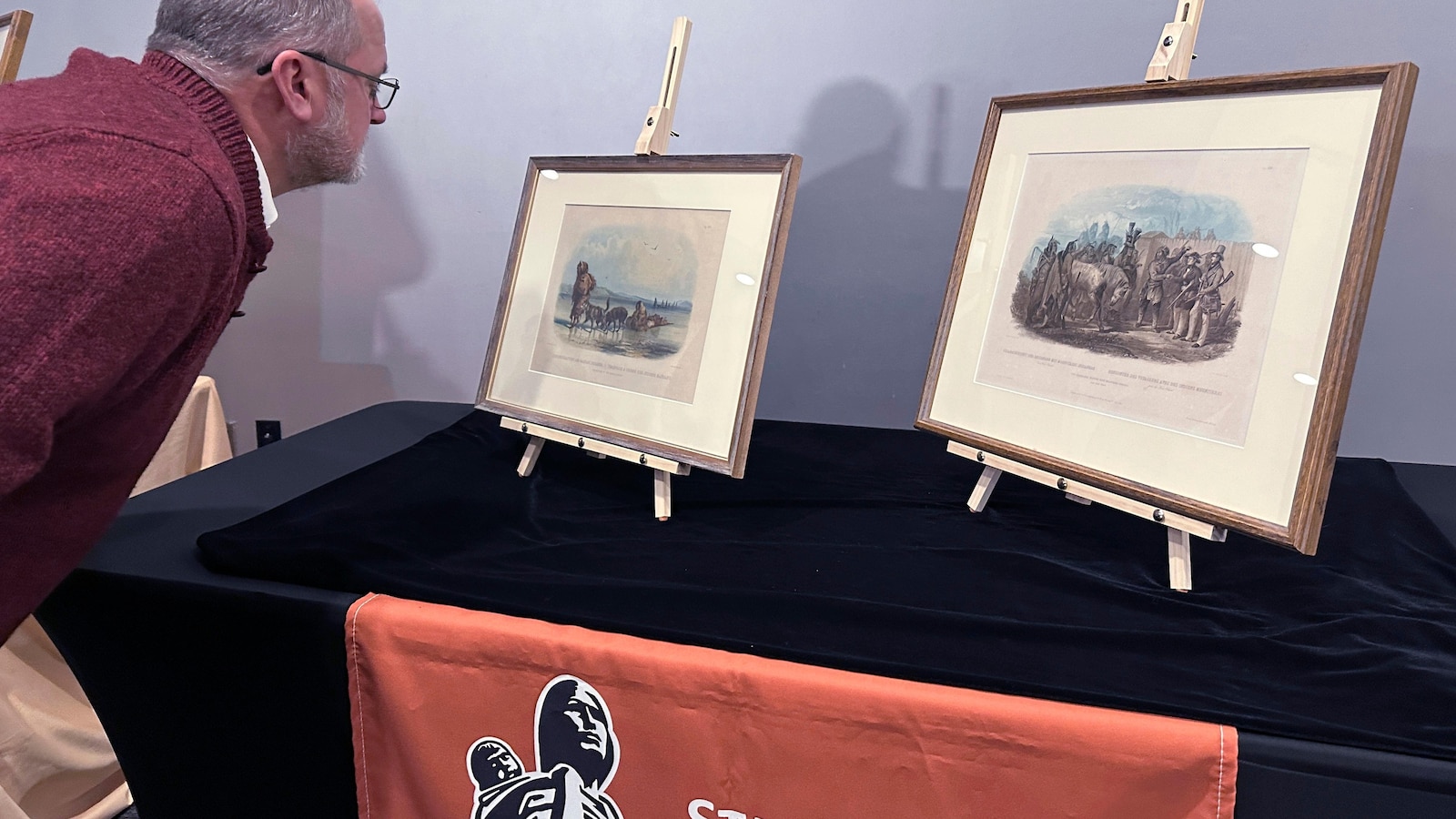BISMARCK, N.D. — Greater than two batch historical prints that depict a slice of Local American hour and tradition at the Higher Missouri River just about 200 years in the past will quickly be extra out there to the community due to a present that enabled a North Dakota group to shop for the uncommon aquatints.
The Situation Ancient People of North Dakota on Wednesday introduced 4 of the 26 aquatints reproduced from 1839 to 1843 from works performed by way of Swiss-born artist Karl Bodmer. He made the paintings right through his journey from 1832 to 1834 with Prince Maximilian of Wied-Neuwied around the U.S., as a long way west as present-day Montana.
The Ancient People is reviewing the prints, which for once in a while have been saved at a San Francisco arthouse, and can form a plan to showcase the pictures, Situation Ancient People spokeswoman Kara Haff, stated.
The aquatints are remarkable partly as a result of they’re extra colourful than maximum historical dim and white imagery, Situation Ancient People Director Invoice Peterson stated.
“It’s not incredibly often that we get a chance to look at the richness of the color and the vibrancy and what the paintings represent and what the art represents,” Peterson said.
The aquatints are presumed to be from an original collection by Bodmer. Aquatints were common in his era and often were used to illustrate books, said David Borlaug, an owner of Masters Gallery in Bismarck, which facilitated the acquisition.
“An original painting would then be converted to metal, copper or steel, by an engraver, which is an art form all of its own, in reverse, and then they would pull a print, if you will, off that plate, usually with just one or two colors. Then the next set of artisans would come in, watercolor artists who would hand-tint, add all the colors to each image, one by one by one,” Borlaug stated.
The images depict a variety of scenes and people, Haff said, including Fort Union, a Mandan village, an Arikara warrior, Mandan chief Mato Tope or Four Bears, the funeral scaffold of a Sioux chief, Mandan dog sledges, bison hunting, a scalp dance and travelers along the Missouri River.
The artworks are printed in textbooks and accessible in other formats and reproduced in other ways, Haff said. But it is rare to have ownership of prints made during the initial publishing, she said. Bodmer’s images were created for a book by Maximilian, “Travels in the Interior of North America,” she said.
Bodmer used ink and pencil for sketching but also used watercolors, Borlaug said.
His images are beautiful pieces and an important component of the history of the American West, said Dakota Goodhouse, a Native American historian and enrolled member of the Standing Rock Sioux Tribe. But some of Bodmer’s artworks are posed and set up, which can misinform the viewer of the daily life of Native American peoples, he said.
“When Four Bears got all dressed up for Bodmer’s portrait, it’s not like he went about his everyday life completely dressed up,” Goodhouse said.
Given the Native American subjects, Goodhouse said he wishes a percentage of sales could go toward supporting contemporary Native American efforts to improve education, health and housing.
Several years after Bodmer’s journey, a smallpox epidemic in 1837 nearly destroyed the tribes he portrayed along the Upper Missouri. Amy Mossett, a member of the State Historical Board and education administrator for the Mandan, Hidatsa and Arikara Nation’s Tribal Education, said entire families died and people had no time to save or pass along material possessions.
“So much was lost, and so when I look at these images, it just kind of preserves … the images of our culture when it was still very active and still very much alive,” said Mossett, a Mandan/Hidatsa member of the MHA Crowd.
To have the aquatints back in the area where they originated may be serendipitous but also destiny, she said.
“Just thinking about the whole circular approach to life, I think there’s just a reason why they came back here and this is really where they belong,” Mossett stated.
The Situation Ancient People continues to be tracing the place the artistic endeavors’ provenance. North Dakota historical past lover Sam McQuade Jr. donated $150,000 to the Situation Ancient People of North Dakota Underpinning, which labored with Masters Gallery and bought the artistic endeavors and donated them to the Situation Ancient People for its everlasting assortment.
